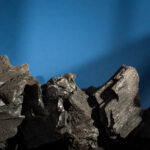Zinc Oxide (zingk OX ide) is a medication that has gained popularity for its diverse range of uses in addressing minor skin irritations. Its applications span from treating burns and cuts to preventing diaper rash, with some products even serving as effective sunscreens. In this comprehensive article, we will explore the myriad applications of zinc oxide ointment, its mechanisms of action, potential side effects, and safety considerations. By the end of this article, you will have a thorough understanding of the medicinal properties of zinc oxide ointment and its importance in your medicine cabinet.

I. Introduction to Zinc Oxide Ointment
Zinc oxide, a compound composed of zinc and oxygen, has been used for centuries for various medicinal and cosmetic purposes. Its primary form of medical application is as an ointment. Zinc oxide ointment is a white, pasty substance that contains a high concentration of zinc oxide. It is renowned for its soothing and protective properties, making it a staple in households and healthcare facilities.
II. Indications for Use
1. Burns
Zinc oxide ointment is an effective treatment for minor burns. When applied to a burn, it forms a protective barrier over the affected area, promoting healing and reducing the risk of infection. The ointment’s cooling effect can also provide relief from the discomfort associated with burns.
2. Cuts and Abrasions
For minor cuts and abrasions, zinc oxide ointment offers a protective layer that shields the wound from external contaminants. This reduces the risk of infection and aids in the healing process.
3. Diaper Rash
Zinc oxide ointment is perhaps most renowned for its role in preventing and treating diaper rash in infants and young children. When applied to the affected area, it creates a barrier that protects the skin from the irritating effects of urine and feces. This is particularly crucial in maintaining the comfort and well-being of infants, as diaper rash can be painful and persistent.
4. Sunscreen
Certain formulations of zinc oxide ointment are designed to serve as a sunscreen. These products offer broad-spectrum protection against harmful UV rays, making them an excellent choice for sun protection. They work by forming a physical barrier on the skin that reflects and scatters UV radiation, preventing it from penetrating the skin and causing damage.
III. Mechanism of Action
Zinc oxide ointment is effective in treating and preventing skin irritations due to its unique mechanism of action. The primary ways it functions include:
1. Barrier Formation
One of the key mechanisms of zinc oxide ointment is its ability to create a protective barrier on the skin. This barrier helps to prevent irritants, pathogens, and other external elements from coming into contact with the injured or sensitive skin. This is particularly crucial in conditions like diaper rash, where the skin is exposed to irritants for extended periods.
2. Skin Healing
Zinc oxide promotes the healing of damaged skin. It does so by stimulating the production of collagen and fibroblasts, which are essential for the tissue repair process. This acceleration of healing helps to reduce the time it takes for wounds, burns, and other skin injuries to mend.
3. Anti-Inflammatory Properties
Zinc oxide also exhibits anti-inflammatory properties, which can alleviate redness, swelling, and discomfort associated with skin irritations. This makes it a valuable component in various dermatological products.
IV. Types of Zinc Oxide Ointment
Zinc oxide ointment is available in various formulations, each catering to specific needs. Some common types include:
1. Over-the-Counter (OTC) Products
You can find OTC zinc oxide ointments in most drugstores. These are typically used for minor burns, cuts, and diaper rash. They are available in various forms, such as creams, lotions, and pastes.
2. Medicated Formulations
Some zinc oxide ointments are medicated with additional active ingredients. These can include antibiotics to combat infection, hydrocortisone for anti-inflammatory properties, or antifungal agents for conditions like yeast infections. These formulations are often available by prescription.
3. Sunscreen Ointments
Zinc oxide ointments designed for sun protection are specially formulated to provide broad-spectrum UV protection. They are available in various SPF ratings, catering to different sun exposure needs. These products are a popular choice for those seeking natural sunscreens that are effective and safe for the skin.
V. Side Effects and Safety Considerations
While zinc oxide ointment is generally safe for use, there are some potential side effects and safety considerations to be aware of:
1. Allergic Reactions
Although rare, some individuals may be allergic to zinc oxide. Signs of an allergic reaction can include skin redness, itching, or a rash. If you experience any of these symptoms, discontinue use and consult a healthcare professional.
2. Stinging Sensation
In some cases, application of zinc oxide ointment can cause a stinging or burning sensation, especially on sensitive or broken skin. If this occurs, you may want to explore alternative products or formulations.
3. Inhalation Risks
Zinc oxide is safe for external use, but inhaling its dust or fumes can be harmful to the lungs. Ensure proper ventilation and avoid inhaling the product when applying it.
4. Consult a Healthcare Professional
If you have any concerns about using zinc oxide ointment, especially on sensitive or compromised skin, it is advisable to consult a healthcare professional or dermatologist. They can provide personalized guidance on the most suitable products and application methods for your specific needs.
VI. Precautions and Recommendations
1. Patch Test
Before applying zinc oxide ointment to a larger area, it is a good practice to perform a patch test. Apply a small amount to a discreet area of skin and monitor for any adverse reactions. This helps ensure compatibility with your skin.
2. Proper Storage
Store zinc oxide ointment in a cool, dry place, and keep it out of reach of children. Check the product’s expiration date to ensure its effectiveness.
3. Sunscreen Application
When using zinc oxide ointment as sunscreen, be diligent in applying it to exposed skin areas. Reapply as needed, especially after swimming or sweating, to maintain effective sun protection.
VII. Conclusion
Zinc oxide ointment is a versatile and valuable addition to your skincare arsenal. Its wide range of applications, from treating burns and cuts to preventing and managing diaper rash, makes it an indispensable remedy for many common skin irritations. Additionally, zinc oxide’s use as a sunscreen offers an effective, natural, and safe option for protecting your skin from the sun’s harmful rays. However, it’s important to be aware of potential side effects and take precautions when using the ointment, especially on sensitive or damaged skin.
In sum, zinc oxide ointment’s uses extend far beyond the boundaries of minor skin irritations. Whether you’re a parent caring for a baby, an outdoor enthusiast seeking sun protection, or simply in need of a reliable first-aid solution, zinc oxide ointment is a versatile and time-tested option that should have a place in your medicine cabinet. Remember to follow the recommendations and consult with healthcare professionals when needed to make the most of this multifaceted remedy.





